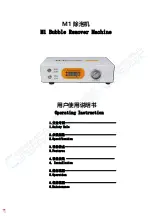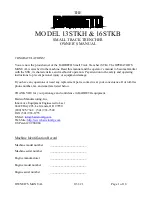
3. Set the desired TIMER Start Frequency. If using a ramping frequency output, when the
output frequency ramps through the TIMER Start Frequency the TIMER will start. If
using a Step Function, the TIMER Start Frequency must be equal to the FAULT
Frequency.
4. With the relay trip circuit connected to the STOP gate binding posts, select the
appropriate TIMER Stop gate. Select the TIMER Start/Stop LATCH ON both the START
and STOP circuits.
NOTE: Failure to LATCH circuits will result in timing error.
5. Set the DURATION Time by using the touch screen and numeric keypad. Time indicated
is in seconds. This time is the desired time, which the output frequency will remain at the
selected fault frequency. The DURATION Time should be set slightly longer than the
operating time of the relay.
6. Set
the
∆
F
1
rate of change (Ramp Rate 1). For example, if you wish to ramp the output
frequency at .1 hertz per second, then press the appropriate touch screen window and
increase the frequency until 00.10 Hz/Sec is displayed. However, if you desire to step
the frequency, press the touch screen window twice. The word STEP should be
displayed.
7. Set
the
∆
F
2
rate of change (Ramp Rate 2) similarly to the
∆
F
1
. A different rate may be
selected from that of
∆
F
1
. A step function may also be selected.
8. Press the START button window. The voltage output frequency will begin to delta (or
step) down. When the relay trip signal is sensed, the output will de-initiate and the
TIMER will stop indicating the trip time.
-
123
www
. ElectricalPartManuals
. com
















































